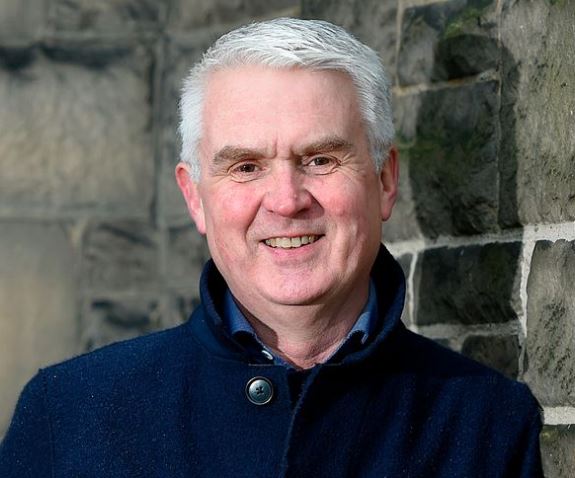 ‘Increasingly, SNP supporters are wrong-headed would Alex Salmond do?’ was the question posed by Iain Macwhirter in his Herald column this morning.
‘Increasingly, SNP supporters are wrong-headed would Alex Salmond do?’ was the question posed by Iain Macwhirter in his Herald column this morning.
It grabbed my attention but made me flinch. The question seemed entirely wrong headed. Granted, I’m sure some SNP supporters are asking it. Salmond has his fan base; it’s clearly sizable and super resilient. But he’s gone.
Then came the answer: ‘Well he wouldn’t have started from here, that’s for sure.’ Macwhirter went on to describe Salmond as a ‘charismatic insurgent, a revolutionary even.’ He would likely have been leading the rolling independence demonstrations around the country which Nicola Sturgeon, had ‘inexplicably disowned.’
As I read the piece I was transported back to the morning of Sunday 14th September 2014 when I headed to Stirling for the Scottish 10k Championships. My legs were heavy after a long season on the roads, my head hurting after a summer of soul searching.
The referendum was just four days away. My mind was made up. I’d be voting Yes. Just 12 months earlier, that hadn’t been unthinkable, but it had been unlikely.
A chance conversation after Christmas had been the catalyst. I wasn’t the only person to make the switch that year. In January, support for Yes had been between the high 20s and low to mid 30s. By the day of my race it was comfortably in the mid 40s.
As I sped up the M9 the traffic was light until, out of nowhere, a cavalcade appeared. I couldn’t quite work out what was happening. Then I got it. The flags — Scottish nationalists. The scent of victory was in the air. Scotland was, at the 23rd hour, teetering on the brink of breaking away.
My pre race nerves turned to pre referendum queasiness. My conversion from No to Yes wasn’t without a dose of idealism; I’d been persuaded that a small country could do big things. But I’d been warned by Project Fear all summer I was falling into the arms of bellowing nationalists.
My Scottish identity had been part of the backdrop to the shift, but far from the driving force. Idealism aside, my support for Yes was pretty pragmatic — and rather dull. Long in the devo plus camp, I now thought moving towards independence had become the most logical way forward.
I felt the half way house we’d found ourselves in — policy levers pulling in opposite directions and an absence of fiscal accountability — was neither use nor ornament.
I got there despite Salmond’s bluster— and in spite of a White Paper which made the fundamental error of dangling policy outcomes when separation, in and of itself, clearly couldn’t deliver them.
And I’d done so knowing my pragmatism was economically questionable. Yet, rightly or wrongly, I was prepared to make a leap of faith, or as one friend put it, throw caution to the wind.
By that Sunday I’d become emotionally as well as intellectually Yes. Placing my cross in the box would not have been possible otherwise. But at that moment, surrounded by the blue and white motorcade, I wondered if I really was doing the right thing.
I’ve nothing against the Saltire; I’ve got a nice glass one on my desk made by my husband’s Aunty Sandra — who has lived in Denmark since 1969.
My black tie attire of choice is a kilt — muted Macdonald. Apt perhaps. For a host of reasons — not least my accent and the fact that I grew up down South — I wear my Scottishness lightly.
Though marches with flags aren’t my thing, I’d defend the right of people to have them. In a democracy that’s right. But unfortunately for the marchers, it’s also beside the point. They won’t get Yes over the line. Hardly anyone who voted No in 2014 is going to go on that sort of Damascene conversion now.
Those who remain to be convinced are much more likely to be on the same kind of journey I went on in 2014. They don’t want to be part of an Independence movement. But they might, just might, place a cross elsewhere next time if they think Scotland would, after all, be better off going it alone.
They are interested in reason rather than slogan even if the reasoning is about what they see as the lesser of two evils. And it’s Brexit, especially no-deal, that matters. For all the antipathy to Johnson north of the border, for them breaking away is a head thing, not a heart thing.
Ashcroft’s much vaunted poll — and it is just one poll — is revealing. The four point (52–48) lead for Yes is not insignificant but there’s a distance to travel to create the kind of lead which would be unassailable.
Brexit can still be a game changer, but it’s finely balanced; 46% think no-deal would be disastrous, 29% agree it would cause difficulties but are less convinced of the worst case scenario. While 18% of those who voted No in 2014 would now vote Yes, 11% have moved in the opposite direction — the Brexit factor clearly works both ways.
And there’s just a hair’s breadth between those who — if we had to choose — would rather stay in the EU (45%) or the UK (43%).
Macwhirter is probably right about the party faithful — some of them at least — and he’s right that doing nothing isn’t an option for the leadership. This window is narrow. But the swing voters who really matter in any contest to come won’t be marching behind a Saltire any time soon.
And they won’t be won over by ‘the politics of the street’ which Macwhirter observes Nicola Sturgeon does not favour, though they might just be pushed away. If I was advising, I wouldn’t start from there.
Cool heads — unsure but spooked by Brexit — might still be persuaded to support independence in the near future. But it will take even cooler heads to get them there.
Legal
